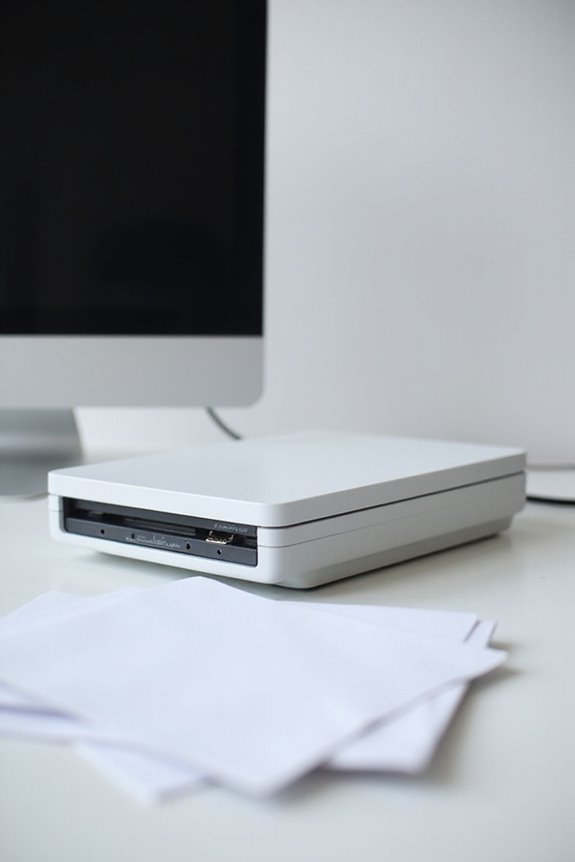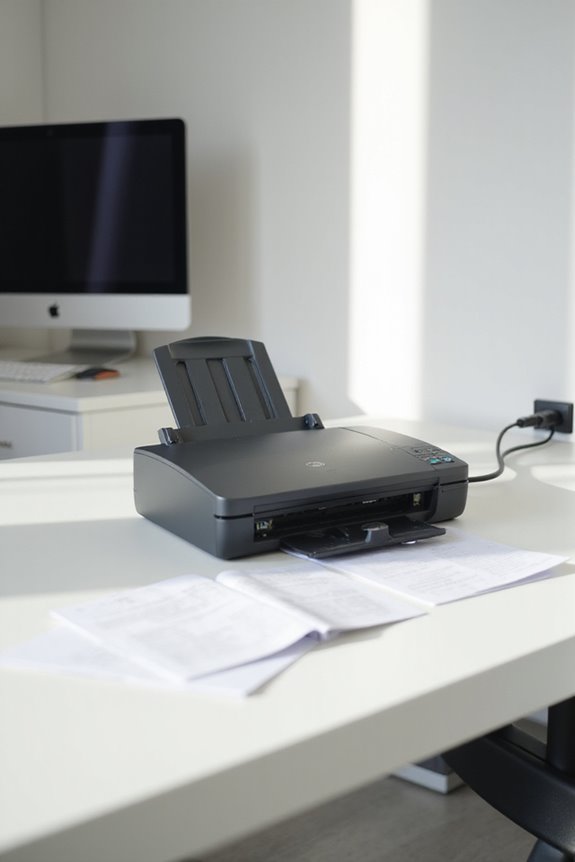To use a scanner’s serial port interface, we start by setting the correct baud rate, typically between 9600 and 115200, and matching data bits, usually 7 or 8. It’s essential we connect USB to serial adapters securely, ensuring cables are compatible for proper signal integrity. Software compatibility is important, so we verify systems meet Windows requirements. By understanding RS-232 signal levels, we can maintain robust communications. Let’s explore more troubleshooting tips to enhance our setup and performance.
Key Takeaways
- Ensure the scanner’s serial communication settings match the system’s baud rate and data bits for proper functionality.
- Use a USB to serial adapter for compatibility with modern computers and verify proper cable connections.
- Install necessary drivers and verify software compatibility with your point of sale or associated systems.
- Check RS-232 signal levels and maintain cable lengths within the maximum for optimal performance and minimal data errors.
- Perform regular diagnostics and troubleshooting for connectivity issues, such as verifying cable quality and communication parameters.
Setting Up Serial Communication Parameters
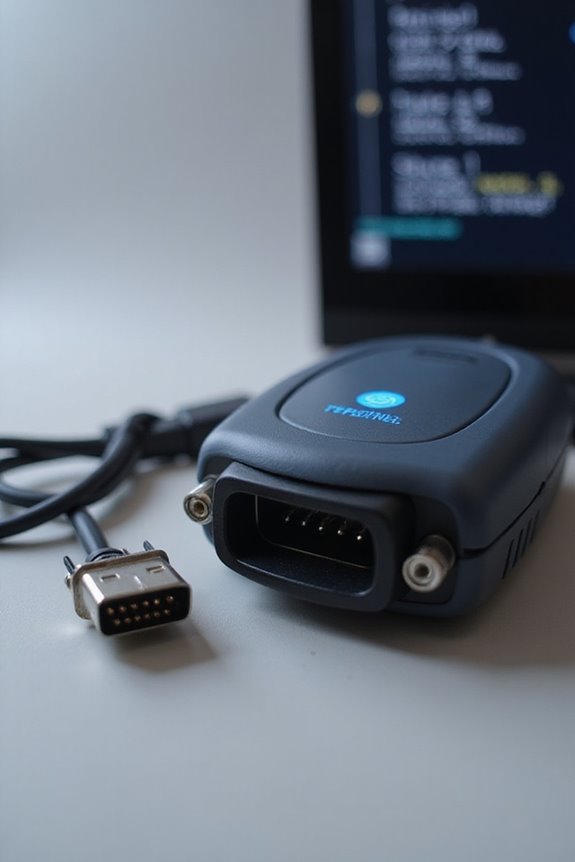
When setting up serial communication parameters, it’s vital to understand five key features that guarantee successful data transmission. The baud rate, which indicates the number of signal changes per second, typically falls at 9600, 19200, 38400, or 115200. Choosing the right baud rate depends on factors like communication distance and potential noise. Next, we have data bits, which generally range from 5 to 8 bits, with 7 or 8 being the norm for ASCII and binary protocols. Having consistent baud rate and data bit settings across all devices is essential for effective communication. Remember, any mismatches can lead to frustrating errors or data loss, so let’s set these parameters carefully for best results. Additionally, understanding OBDII protocols can enhance your ability to effectively communicate with various vehicle systems.
Connecting Serial Scanners to Modern Systems
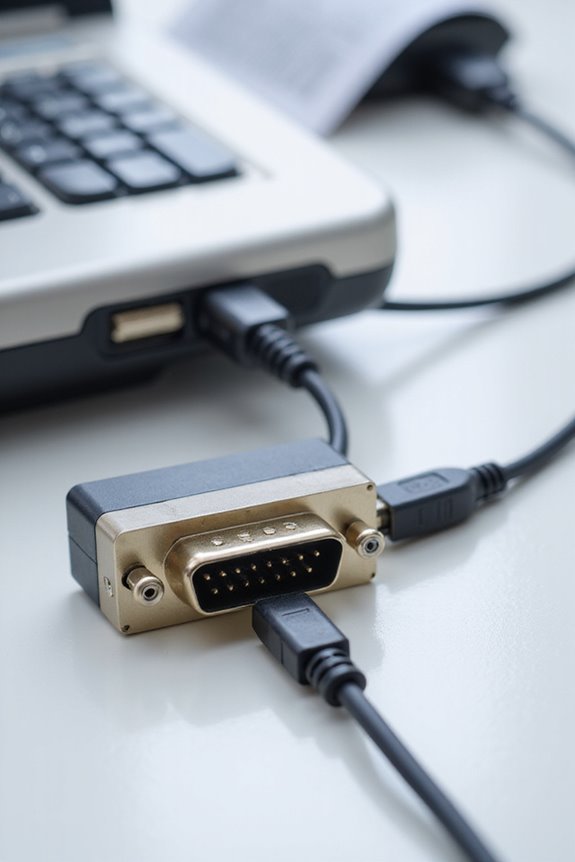
Connecting serial scanners to modern systems requires a thoughtful approach to guarantee seamless communication. Most of us know that modern computers often lack built-in serial ports, making adapter selection essential. We recommend using USB to serial adapters, which convert signals for easy connections. These devices are typically plug-and-play and cost under $20, making them affordable.
Proper cable management is also key for reliable operation. We should verify that RS-232 cables connect firmly to the adapter, and if needed, use extension cables for flexibility. Keeping cable lengths and pinout compatibility in check helps maintain signal integrity. This attention to detail guarantees dependable communication between legacy scanners and modern systems, enhancing efficiency in our workflows. Additionally, ensuring compatibility with plug-and-play functionality can further streamline the connection process, saving time and reducing technical issues.
Software Requirements for Serial Scanners
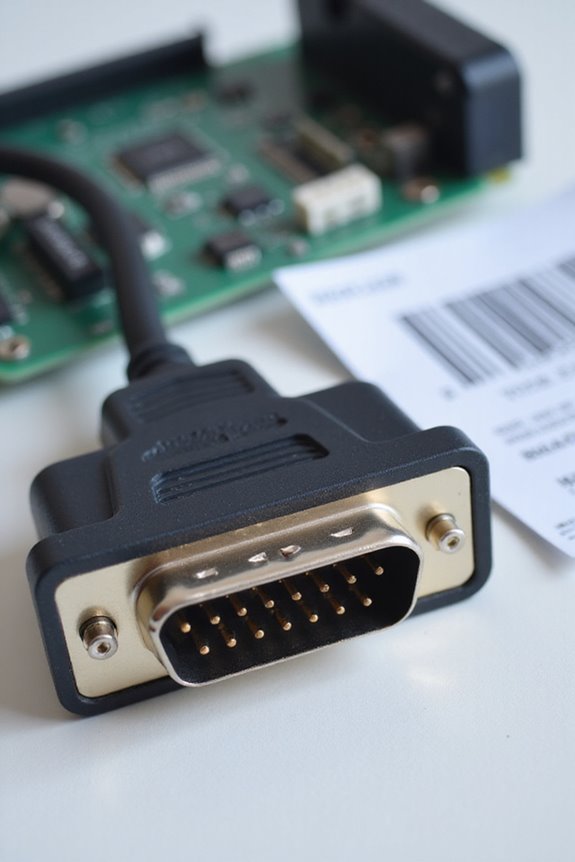
To guarantee our serial scanners function effectively, we need to take into account several software requirements that support their operation. First, we must verify software compatibility with our point of sale systems; otherwise, middleware like Datasnip may be necessary. Windows operating systems, typically XP or higher, are required for peak performance. Driver installation is vital for scanner communication, and we need appropriate software tools for port configuration. Remember, a minimum processor speed of 1 GHz and 256 MB RAM is essential for smooth scanning. Additionally, a reliable 10/100 MB network connection aids in networked environments. By following these guidelines, we enhance the effectiveness of our serial scanners, leading to more productive operations in our environments. Moreover, ensuring OCR technology is properly integrated boosts document management efficiency.
Understanding RS-232 Signal Levels
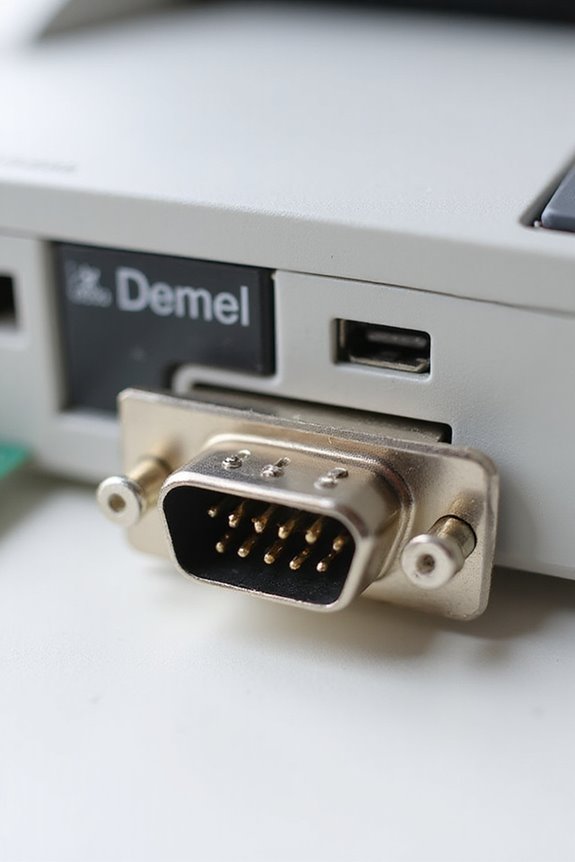
Understanding the intricacies of RS-232 signal levels is fundamental for anyone working with serial scanners. The RS-232 standard uses voltage thresholds where a high level is between +3V and +15V, signifying a logic 0, while low levels range from -3V to -15V, representing logic 1. This inverted logic helps maintain signal integrity, especially over longer cable lengths, as it enhances noise margins. Typically, we find maximum cable lengths around 15.24 meters to preserve these voltage levels. A receiver must tolerate input voltages from -15V to +15V, guaranteeing reliable communication. By keeping these standards in mind, we can avoid costly data errors and guarantee robust performance in our serial connections. Additionally, it is essential to consider scanning speed to ensure efficient data transfer during operation.
Operational Benefits of Using Serial Port Scanners
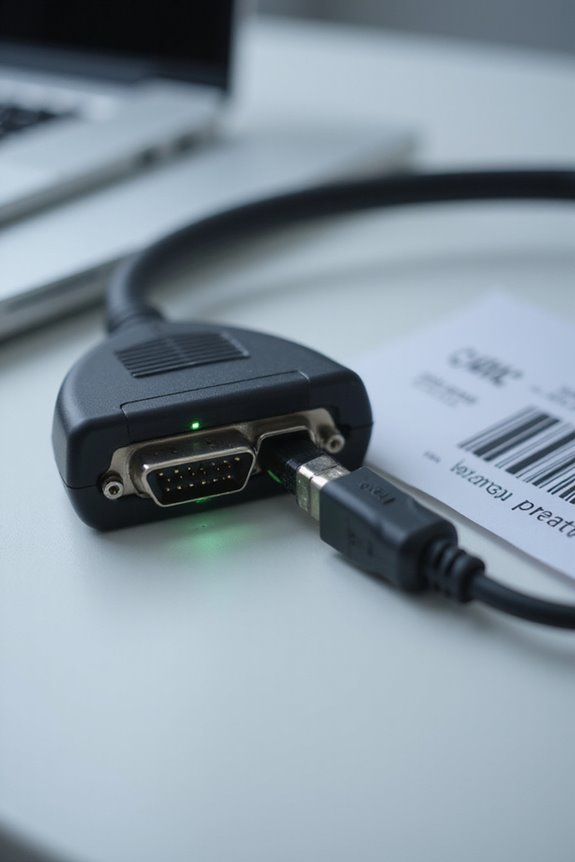
Utilizing serial port scanners offers numerous operational benefits that can greatly enhance our workflow efficiency. These scanners facilitate smooth barcode scanning through dedicated serial communication lines, minimizing input conflicts typical of keyboard wedge interfaces. By allowing applications to handle scanner input in the background, we’re able to work seamlessly on other tasks without interruption. Plus, real-time data monitoring helps guarantee accuracy in our capture processes, while built-in error detection and flow control foster stable operation. With their compatibility across legacy devices, we’re also cutting costs considerably by using widely available RS232 technology. This efficiency supports multitasking, allowing for automated data entry, thereby boosting our productivity in both retail and industrial environments. Moreover, the ability to support multiple connection modes ensures that these scanners can adapt to various operational needs effectively.
Troubleshooting Common Serial Interface Issues
When we encounter issues with serial interfaces, identifying the root cause can often feel challenging. Common culprits include incorrect communication parameters like baud rate, and faulty cable selection, such as using a straight-through cable instead of a null modem. To tackle these problems, we can utilize tools like the “Show Interfaces Serial” command for error detection or perform extended ping tests to verify connectivity. Additionally, ensuring proper cable quality and connections is vital; damaged cables can lead to costly data errors. By checking voltage levels between pins and confirming that serial ports are recognized, we set the stage for reliable communication. With these steps, we can greatly enhance our troubleshooting process and achieve seamless serial connectivity. Regular diagnostics are also essential for maintaining overall system performance and preventing future issues.
Frequently Asked Questions
Can I Use a Serial Scanner With a Tablet or Smartphone?
While we dream of seamless connections, using a serial scanner with a tablet or smartphone isn’t simple. We find Bluetooth connectivity opens doors, ensuring mobile compatibility without the hassle of outdated serial ports.
What Types of Applications Benefit Most From Serial Scanners?
We’ve found that applications like inventory management and data collection benefit the most from serial scanners, enhancing efficiency and accuracy while enabling seamless integration across various platforms. These solutions help streamline processes considerably.
Are There Specific Serial Scanner Brands Recommended for Beginners?
When considering recommended brands for serial scanners, we think beginner options like Motorola, Honeywell, and Zebra offer great reliability and ease of use, ensuring newcomers can find a scanner that fits their needs effectively.
How Can I Test if My Scanner Is Functioning Properly?
In our quest for clarity, we commence scanner diagnostics through meticulous testing procedures. Let’s loop connections and validate functionality, ensuring our device’s heartbeat pulses with accuracy before diving deeper into its capabilities.
What Precautions Should I Take When Handling Serial Connections?
When handling serial connections, we should prioritize cable management for connection stability. Let’s avoid bending cables, guarantee clean environments, and keep connectors dry to maintain peak performance and prevent any potential hazards.

